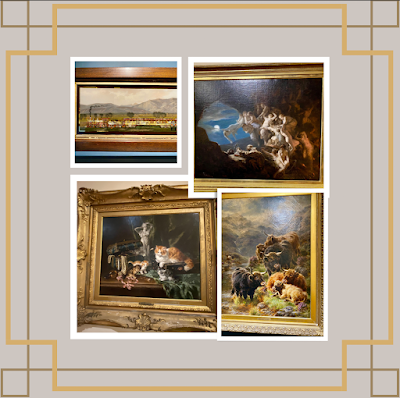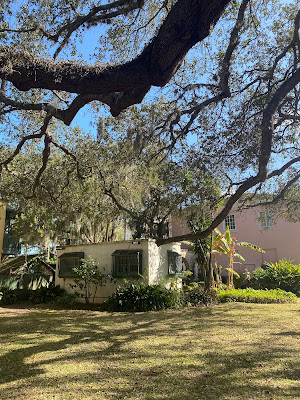St. Augustine, Florida
March 10, 2022
An iconic building in the heart of America’s oldest city. An extraordinary museum collection, beautiful, curious, and intriguing. Occupying the former Hotel Alcazar, a Gilded Age resort hotel commissioned by railroad magnate Henry Flagler, the Lightner Museum offers an immersive experience of art, architecture, history, and design.
Exterior 1
Exterior 2
Artifact 1
This Rococo Revival Style Urn is made of blue and white porcelain. To make this Parian Style urn, oxide of cobalt was mixed into a thin clay slip and applied to the
inside of the mold before the rest of the body was poured. The colors fused together when the pottery was fired. The urn was made in Bennington, Vermont, where most blue and white porcelain have a precise blue background that follow a design.
Artifact 2
When it was built in 1888, this swimming pool was the world's largest indoor pool, measuring 120 feet long and 50 feet wide. Anyone from the town or the other hotels could access the Casino for 25 cents. It quickly became common for swimmers to visit the pool at midday, when the hotel band would perform. Weekly evening entertainments included daring dives from the ballroom balcony into the pool, games of water polo, races, comedy events, and general swimming. The evening would conclude in the ballroom with dancing and refreshments.
Visual In Conversation 1
https://www.popsugar.com/entertainment/Diagon-Alley/Preview-Pictures-Video-35050726
The beautiful snowy owl is displayed in the Lightner Museum and is describes and a day-flying, arctic bird. Its habitat is most often in prairies, fields, marshes, beaches, and arctic tundra. Letters, parcels, and Howlers were all delivered to the wizards by owls. Because of the soft, hair-like edges on an owl's flight feathers, as well as their inherent camouflage, they are ideal for delivering mail. This wonderful bird has fascinating value, even in the realm of fiction.
Visual In Conversation 2
The marble statue to the left is an intricate late 19th century sculpture of Cleopatra by Raffael Romanelli. The Italian artist incorporated Carrara as well as Breccia Violet Marble and Travertine. The sculpture visually reminded me of the painting to the right by Nanci France-Vaz. The top of their heads are delicately decorated; both are wearing flowy clothing, with one breast uncovered. Both women have a strong sense of femininity and power in their stature.
Literature In Conversation
Excerpt from "Thirteen Ways of Looking at a Blackbird" by Wallace Stevens
"Among twenty snowy mountains, / The only moving thing / Was the eye of the
blackbird."
This stanza is describing the power of a landscape. This particular landscape is comprised of "twenty snowy mountains" and is contrasted by a blackbird. Although it's the first stanza of this poem, it does not provide his readers with sufficient background or a complete description of the setting. This frees the imagination to create visual moments that aren't tied to a specific location or time. Otto Lightner was a collector of things that people would like to admire. His incredible collections can be found in the Lightner Museum as items that do not signify a specific time or place; they are simply enjoyable.































